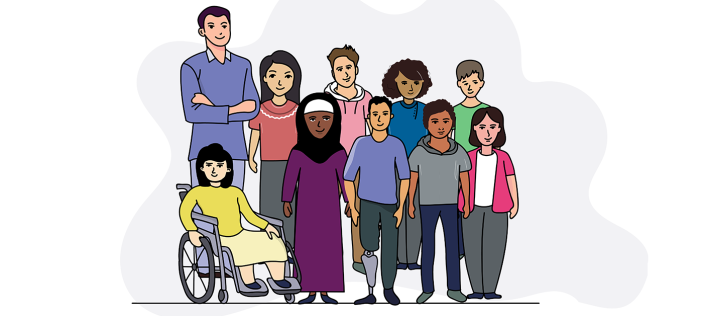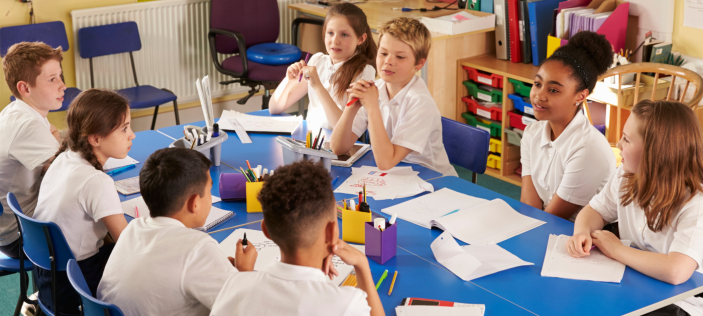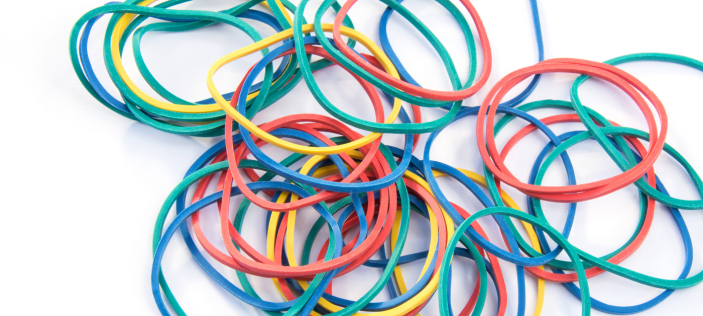But aren’t they too young?
That is something I often hear in relation to the discussion and inclusion of LGBTQ+ themes in primary school. There are myths that by exposing young children to LGBTQ+ themes that it could harm them or make it more likely that they will themselves identify as LGBTQ+ as they get older.
‘Even before reaching secondary school, prejudice and discrimination can have a profound impact on young LGBT people’
Hidden Figures report, LGBT Foundation, 2020
I would not for one moment ever suggest labelling any child as LGBTQ+, certainly not at a primary level (nor at a secondary level unless the child self-defines). Labels can be dangerous and force people into a box. When I was getting to grips with my sexuality as a teenager, the label was my biggest issue. In fact, when I first went to university, despite already being out to the majority of my school friends and family, I made the decision not to come out until after my first semester because I was adamant that I did not want my new friends to make assumptions about me based on the label of being gay.
Giving labels is not the place of an educator, however, what is our place – more than that – our duty, is to present to children all the ways in which people may decide to define themselves, and present that not only as acceptable, but as usual and as a valued part of our society. In a 2020 Hidden Figures report by the LGBT Foundation, statistics show that 70% of young LGB people have thought about taking their own lives. This rises to 92% for trans young people. The report states that: ‘The sustained impact of experiencing discrimination at a young age is indicated by the poor mental health outcomes for many young LGBT people’.
So, if a primary school chooses to ignore the existence of LGBTQ+ people within society by not including explicit reference to them within the curriculum, then – in my opinion – they will be having a direct impact on a child’s current and future mental health and wellbeing. This may also have a direct impact on the child’s academic success, therefore their future career options. Schools should be safe places for children and safeguarding is at the heart of everything we do, so why is it that in 2022, many schools are still choosing to avoid the issue as much as possible – largely due to fear of parental reaction perhaps? Or perhaps staff are scared of saying the wrong thing?
Is it also not reasonable to assume, that if by ignoring and failing to usualise (not normalise – that infers there is a way in which we can be abnormal) LGBTQ+ people in the curriculum, we are not only allowing mental health issues to develop but that there could also be an impact on behaviour? I was recently talking to a friend of mine whose daughter is now in secondary school and identifies as gay. Despite having a very strong family unit and attending a good school, this child displayed many challenging behaviours throughout her time at primary school and these got worse through the early part of secondary school culminating in some severe mental health issues. This has all been related to the fact that she now identifies as being gay. I have a question: if she had seen LGBT+ people in characters and books from an early age, if LGBT+ people had been included and usualised in the curriculum at school, would her behavioural issues have been so bad and would her mental health be in a better state today than it is currently is? One can only speculate, but I would guess that she has always felt different but didn’t know how and was unable to articulate that. Had she have seen herself represented at a much earlier age and seen herself as being ‘normal’ and a valued part of society, perhaps many of the issues which she has experienced and the behaviours which she has displayed could have been different.
If I think back to myself as a child, I always knew I was different – from a very early age. I can remember back to when I was at pre-school and I knew then that I was different from the other boys, but I didn’t know how and there was no way I could articulate that. Unfortunately, Section 28 prohibited schools from even talking about the existence of gay people throughout my time in school. Consequently, in my school reports, the overwhelming thing that comes across is that I was quiet and showed a lack of confidence. Recently, words used to describe me by colleagues included: outgoing, brave and engaging. This is quite a turn around. Undoubtedly much of that will be due to age – I am sure many people grow in confidence with age. However, would I have been more confident when I was at school if I could have been my authentic self? I knew I was different. I didn’t know how for a very long time. The other children knew I was different – they probably didn’t know how either. Some were perfectly fine and were my friends. Other chose to bully me because I was different. Would they have acted differently if we had been taught about the existence of LGBT+ people from an early age? Would I have had more confidence in myself at school as a result? Perhaps this might have even had an improved impact on my academic performance – I would say now that I probably did not reach my potential. There are no sure ways to answer these questions, however, what I am sure of, is that there is a direct link between the usualisation of LGBTQ+ people from an early age and improved mental health of LGBTQ+ young people as they grow older, because they can see themselves being a valued part of society, no matter who they are.
It is now a statutory requirement for primary schools to include LGBT people within relationship education. Statutory government guidance tells us that ‘At the point at which schools consider it appropriate to teach their pupils about LGBT, they should ensure that this content is fully integrated into their programmes of study for this area of the curriculum rather than delivered as a stand-alone unit or lesson’. Read the full text here:
Gov.UK: Introduction to requirements
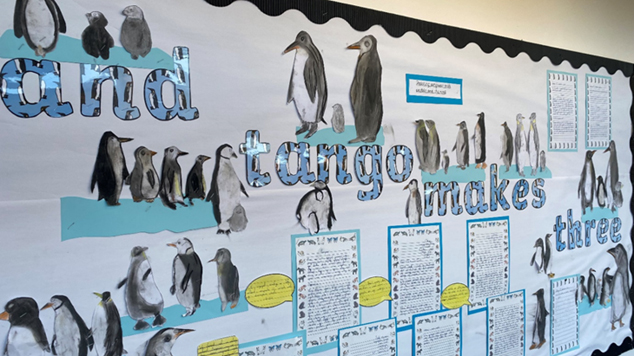
I would argue that the point at which it is ‘appropriate’ to teach about LGBT+ people is from as soon as they step through the door. And this should happen not just through lessons specifically about relationships, but through the entire curriculum. In January, I spoke at the HfL Primary English conference focussed around diversity. I spoke about the outcomes of the Explore & Engage unit, ‘And Tango makes three’ by Justin Richardson and Peter Parnell. This is a great example of how LGBTQ+ people can be usualised through the curriculum. This book, if you don’t know it, is a story based around two male penguins – who are in a relationship – adopting an egg and raising a chick named ‘Tango’. This was written as an English unit of work which would work across the entire primary age range and provided a range of writing opportunities.
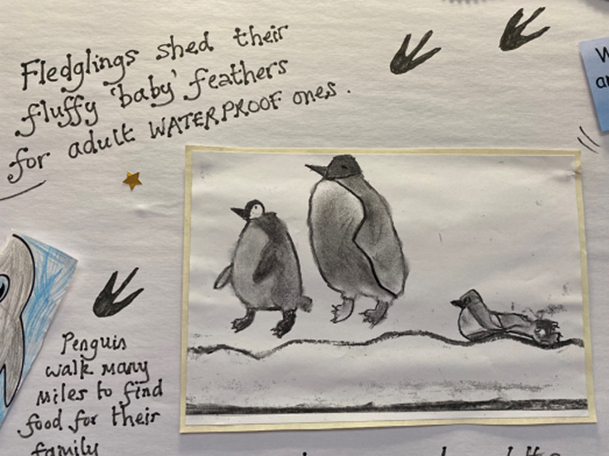
This allowed for teachers to assess children across a range of writing and to see progression across the school. This was an English-focussed unit of work which many schools across Hertfordshire used brilliantly and achieved fantastic outcomes with. The key for me though is that this unit did not focus on the same-sex element. It was there and discussions may well have taken place in classrooms if they needed to, but it was not the focus of this plan at all. This is what usualisation looks like. The inclusion of LGBTQ+ characters, threaded throughout the curriculum without that being the main focus. If this were carefully planned, across all the curriculum areas to account not just for LGBTQ+ people, but diversity in its entirety, then throughout their time at primary school, all children should get to see positive representations of themselves and their families throughout the curriculum.
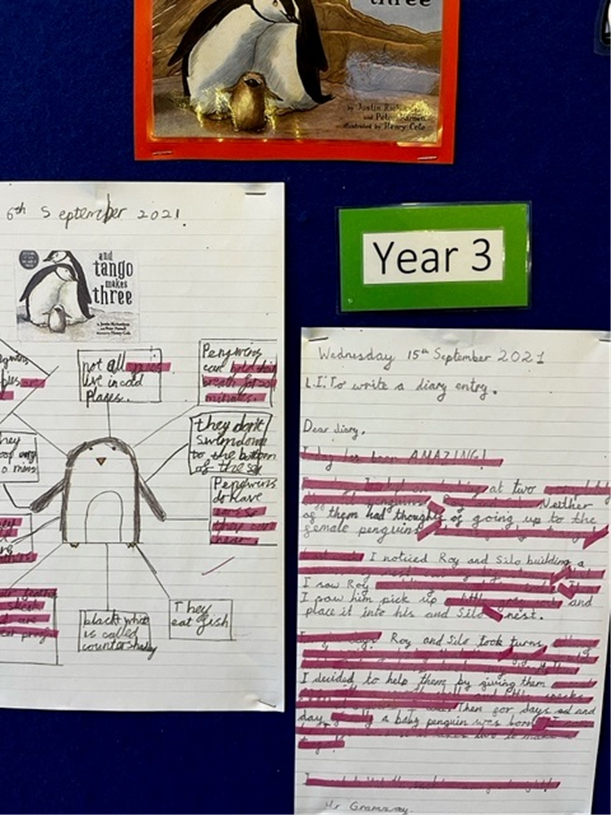
Obviously, this can then be supplemented with additional books which are read, unplanned conversations and discussions which will come up. It would also make additional events such as LGBT history month or Black history month more relevant and less tokenistic. A chance to really draw attention to that area, but not being something on a ticklist to say that that has been covered that year. We are fortunate that there are now an increasing number of fabulous books which show diversity in all its forms. Children’s books for all ages which can act as fantastic starting points for units of work, particularly in English. But how about other areas of the curriculum – surely there are ways to talk about diversity when thinking of artists, musicians, scientists, sports people just to name a few. Seeing these positive role models could be so empowering for all children and I think that we need to spend more time considering the role models which we use in our curriculums to reflect the society in which we live.
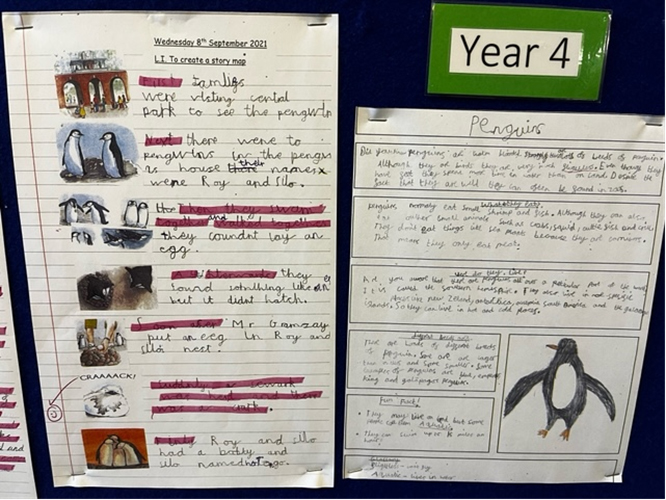
The point is to create an atmosphere and curriculum where anyone is accepted and valued, no matter who they are. If we can do this, the impact could literally be saving lives. What is more important than that?
With thanks to Longmeadow Primary School in Stevenage and Mary Exton Primary School in Hitchin for sharing these outcomes with us.
If you would like to speak further with Michael in relation to the content of this blog, you can email him at this address: migray@gamlingayvp.org

